Gruyère Switzerland Cheese Factory
Written by Dave: While waiting for our camper to be fixed, one of the things we knew we needed to do was visit Gruyère and the cheese factory. Parking can be a bit tricky in this small village, but luckily we were in our borrowed car. Earlier in the morning, parking is more available, but as the morning progresses, parking becomes very scarce.
We headed into the factory, bought our tickets, and began our tour. We were given a sample of three different ages of Gruyère cheese, audio tour guide sticks, and we were off.
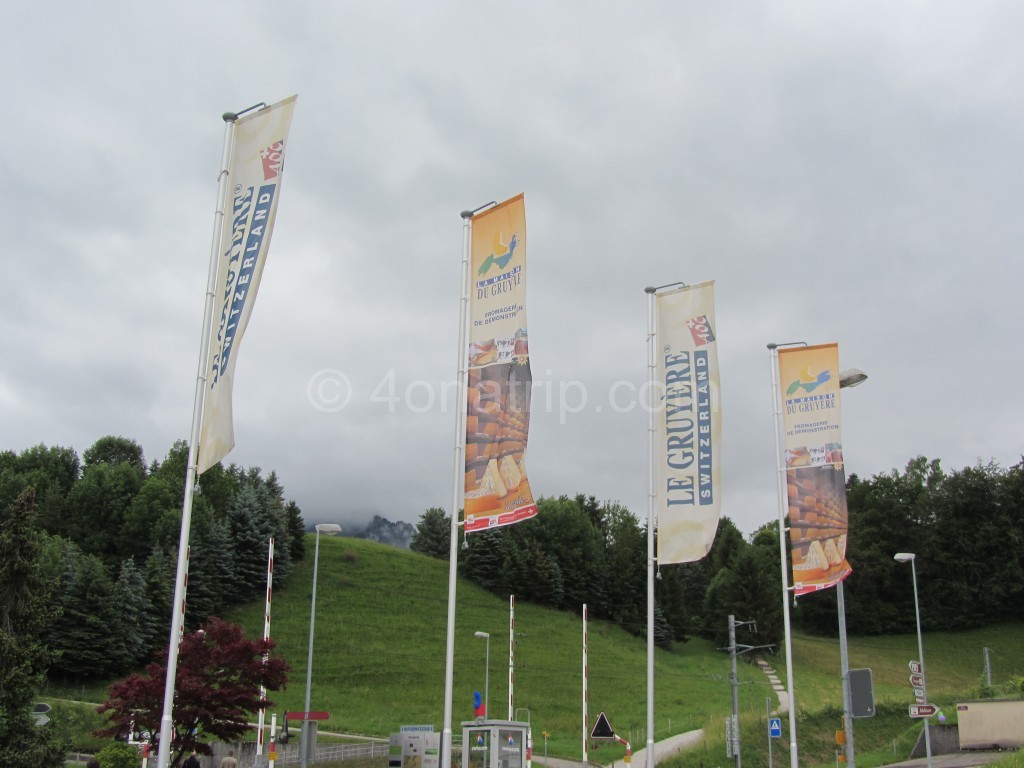
In the beginning of the tour, we learned about the region of Gruyère, and why the cheese is so unique. The cows roam freely on the high mountain slopes, and graze on an incredible variety of vegetation. They had samples of the various flowers, herbs, and grasses that all contribute to the unique flavor of the cheese. Luie had a great time smelling each and every one of the samples.
It was easy to see how the variety of plant life available for grazing made a difference in the flavor of the cheese.
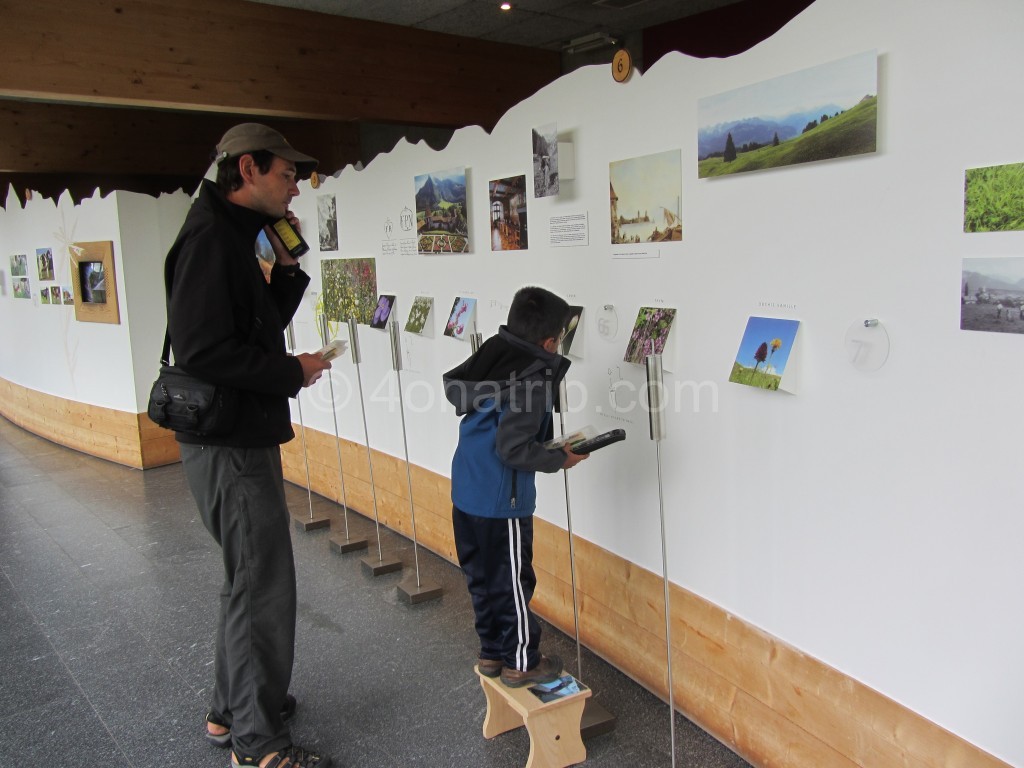
We then moved on to view the production area. We learned that to make one wheel of cheese weighing 35 kg (77 pounds), 400 liters (almost 106 gallons) of milk is needed. That is a lot of milk.
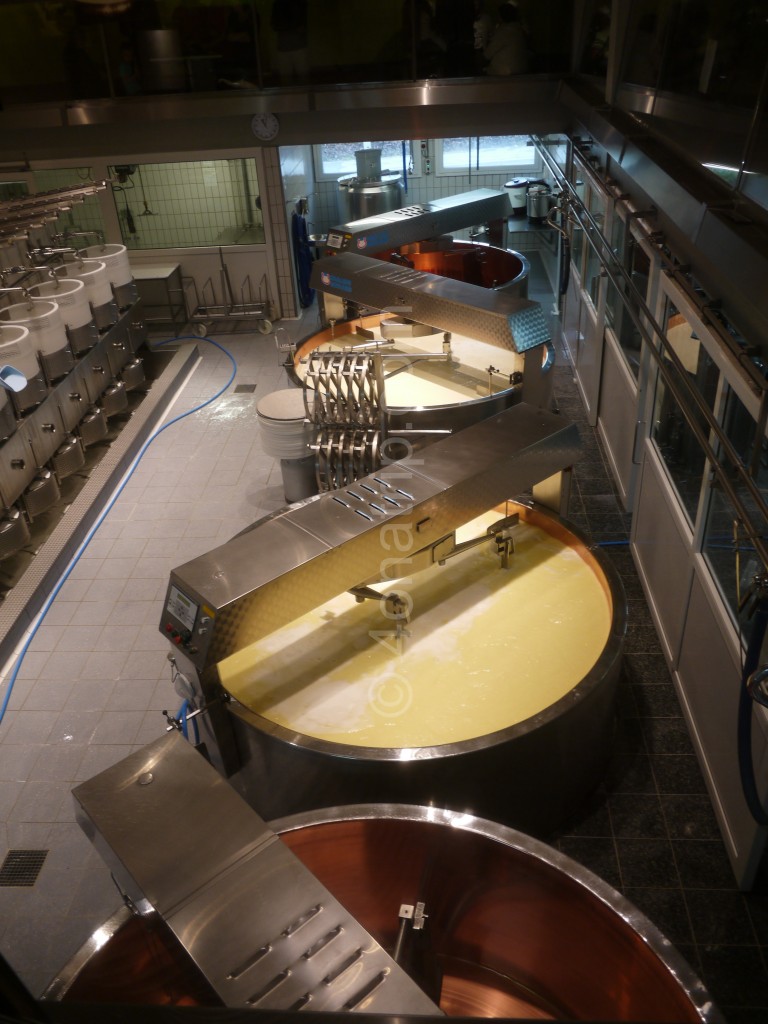
After the milk is heated to produce curds, the curds are transferred to the presses. The whey that is drained off below is saved for pig feed.
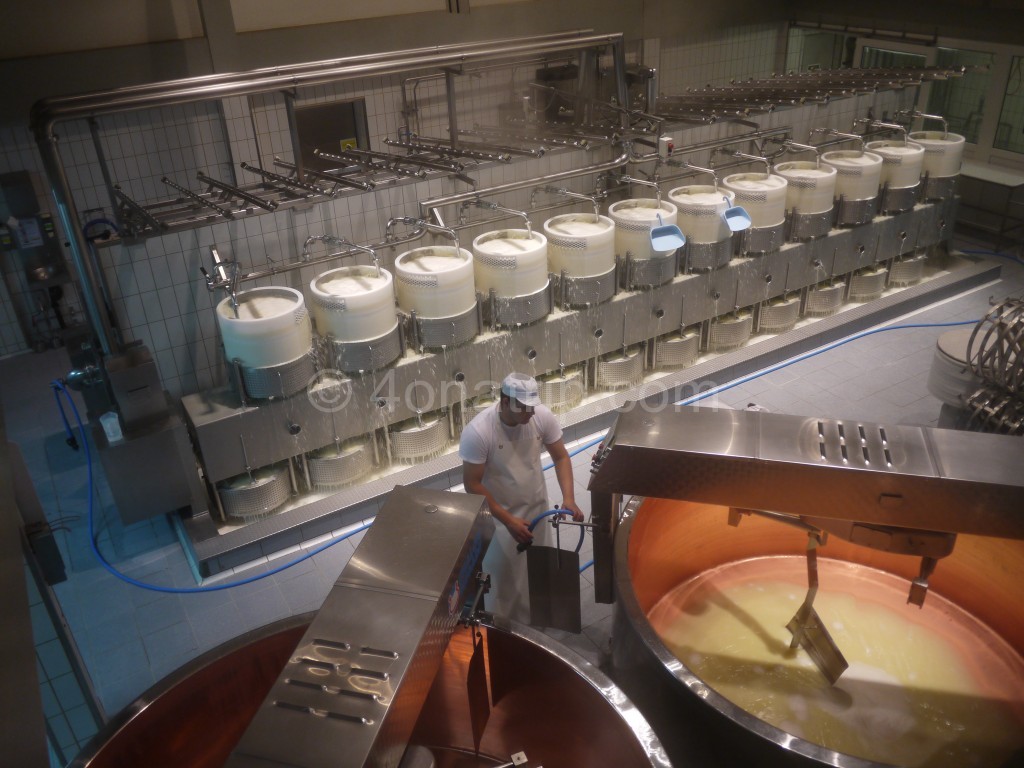
After the cheese has been pressed for 20 hours, it is moved to the salt baths. Here it picks up half of its final salt content.
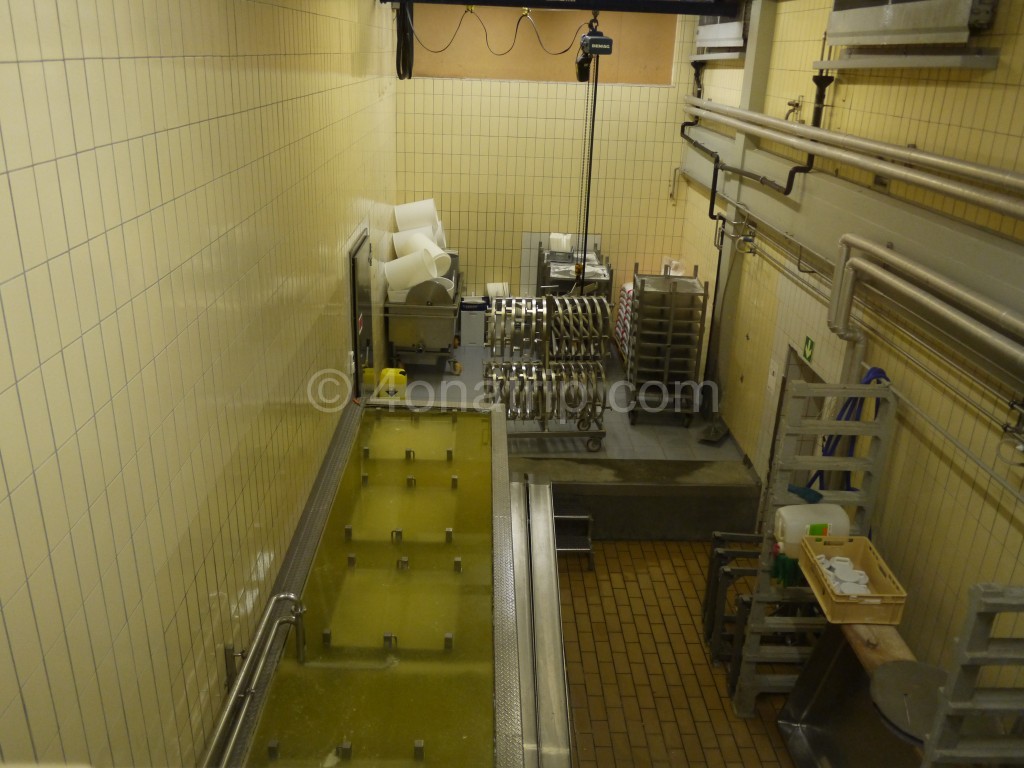
The cheese is then moved into the storage cellar for curing. For the first 10 days the cheeses are rubbed with a salt solution and turned. Then they are rubbed with the salt solution twice a week for the following three months. Finally, they continue to be rubbed with salt solution once a week until they are sold. This washing is performed to ensure a nice healthy rind on the cheese.
After three months, the cheese wheels are moved to a “finishing house” for final maturation. The maturation process will continue for five to twelve months. We found that we enjoyed the flavor and the “graininess” of the twelve month or older cheese the best. Amazing flavor and texture.
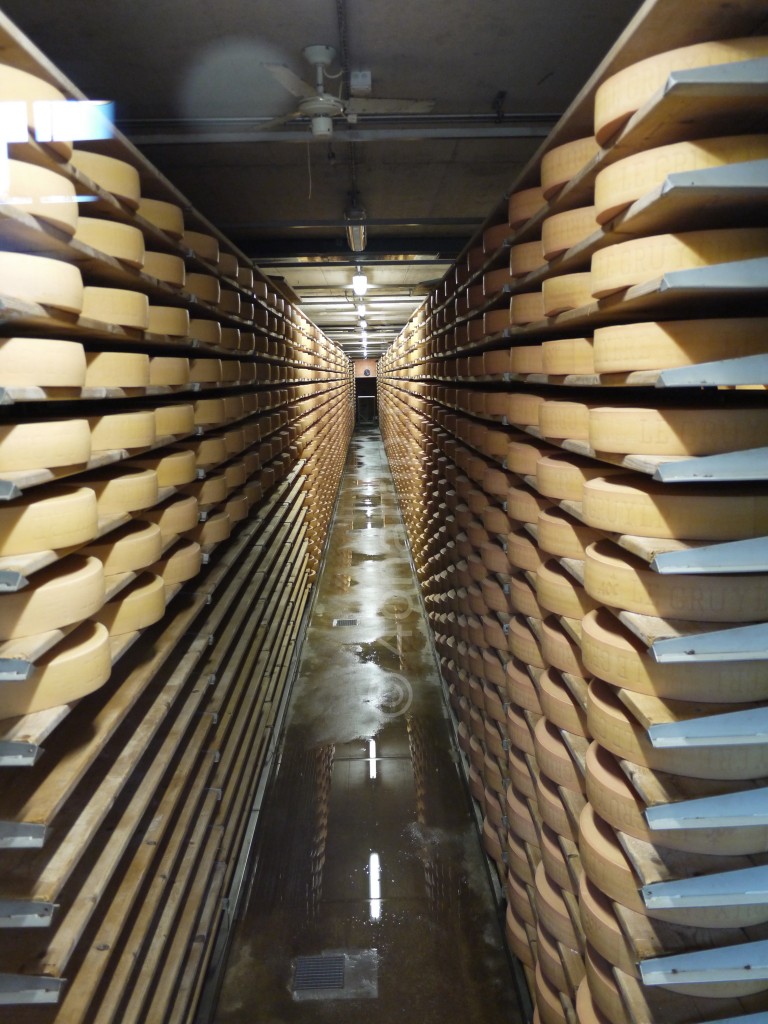
Look at the size of that cheese wheel! They had an excellent display on how the cheese was transported over the past from Gruyère throughout Europe. The cheese is very regulated, ensuring consistent quality.
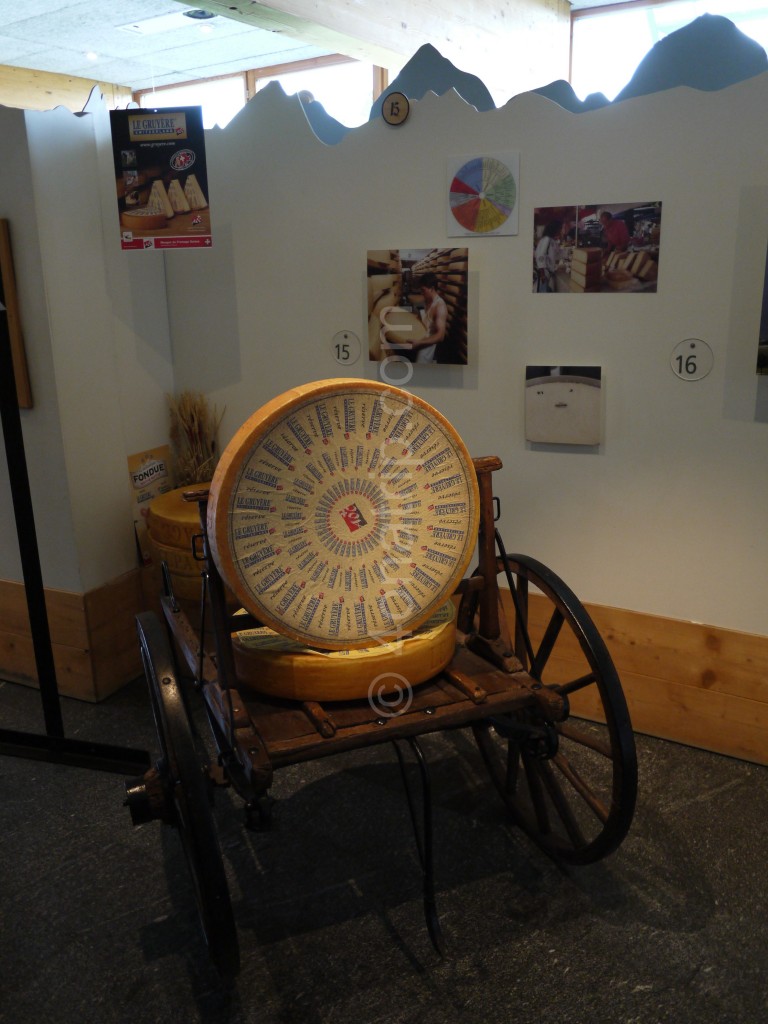
It turns out that Switzerland consumes 59% of the Gruyère cheese produced, Germany 9%, and France 7%. USA receives 10.3%, with the remaining 15% spread out over the rest of the world.
We bought some Gruyère cheese for fondue, which we made when we returned to the camper. It was fantastic! The kids really seemed to like it also. I wasn’t sure how they would take it, as when I was about 12 or 13 years old I had my first fondue. After a couple tastes, I got myself a bowl of Life cereal instead. Pretty sad.
It was a great visit, and a fun activity to enjoy with the family. We took full advantage of the Gruyère cheese available while we were in the region. There were so many different styles and ages, and I can’t say we ever tried a bad cheese. I think Gruyère cheese is our favorite cheese we have encountered so far on our European trip.

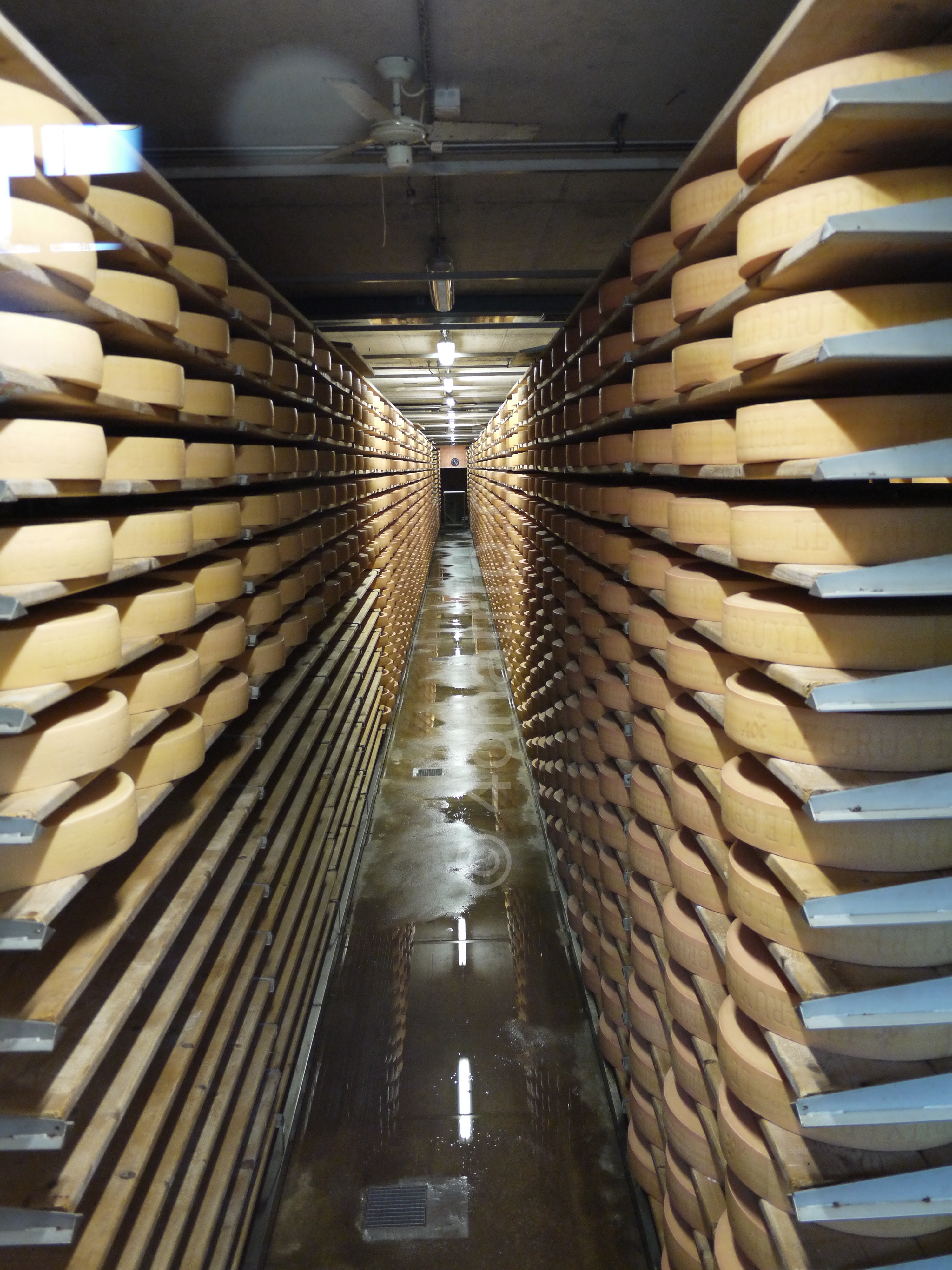

Wow. Gruyere is your favorite cheese of all so far. That is high praise. I’ll have to go find some here and see how it compares. Probably doesn’t travel well? Thanks, Dave, for you interesting and informative posts.
Oh, it travels just fine! We love it and use it in fondue for many special occasions throughout the year, as well as in other recipes.